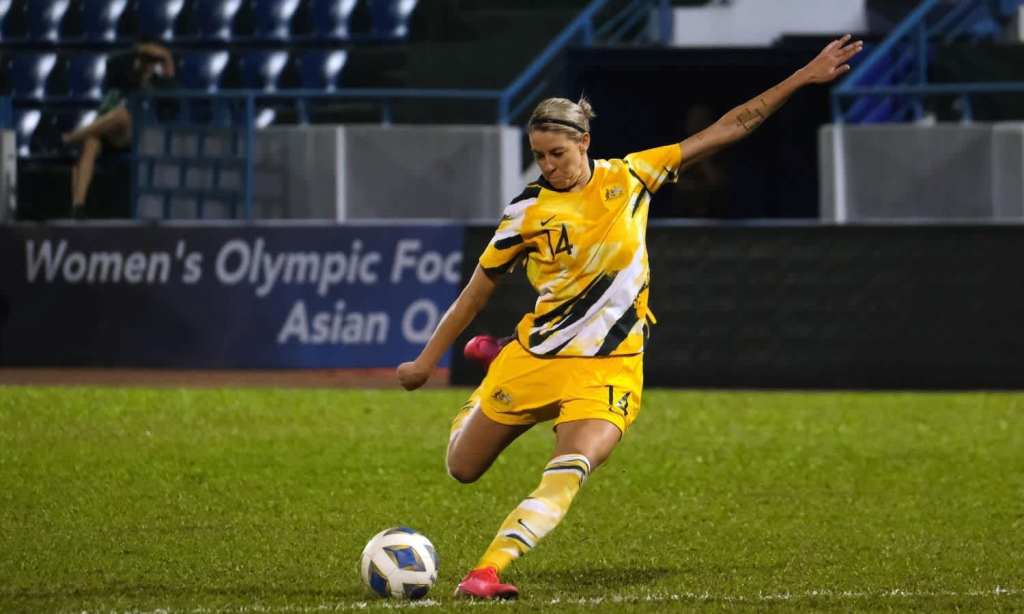The year 2020 continues to challenge societal norms and the way we as individuals operate within our daily lives.
Sport, like many institutions, has been affected by the global coronavirus pandemic and has been forced into readjusting schedules and competitions in an attempt to finish the 2020 season.
Major codes in Australia including the AFL and NRL have shortened their seasons, while Super Rugby has now split into two domestic competitions in Australia and New Zealand.
While there has been a resumption of sport, it has been dominated by the male gaze whereas female athletes and competitions have been seemingly overlooked.
Gender inequality which exists within society is highlighted through the microcosm of sport, as female athletes and sporting bodies find themselves continually fighting for the same recognition as their male counterparts.
And this fight for equality is one which can be traced through history where women’s sport has been routinely sidelined.
In 1896, Olympic founder Pierre de Coubertin claimed women’s participation as, “impractical, uninteresting, unaesthetic, and incorrect,” while in 1920 the English Football Association banned all women’s games which had been hugely popular until the 1970’s.
Now, with the ongoing pandemic, the gap has again been reinforced while also highlighting the financial gap and media coverage.
Recognising privilege must be the first step in closing the gender gap when it comes to male and female athletes. Utilising privilege to help those who do not benefit from it, is essential and especially crucial when building female sporting brands.
These trademarks have experienced significant growth over the last few years including the women’s football team, ‘The Matildas’ topping a list of Australia’s most popular national teams at the end of last year.
There was also Australia’s successful bid along with New Zealand for the Women’s Football World Cup in 2023, again representing another global opportunity for women’s sport in our country, which followed on from the successful Women’s T20 cricket world cup which attracted a record 86,174 fans at the Melbourne Cricket Ground for the final.
Unfortunately, this success was somewhat overshadowed by the decision of Channel 9 to broadcast the final on its secondary channel, Gem, which was criticised heavily at the time.
While some steps forward were taken, the momentum gained by women’s sport earlier this year again finds itself again taking a backseat.
“While some steps forward were taken, the momentum gained by women’s sport earlier this year again finds itself again taking a backseat.”
This has included the AFLW (Australian Women’s Football) being curtailed while stages such as the Olympics and Paralympics where Australians traditionally embrace their female athletes as equals have been postponed until 2021.
The women’s national rugby league (NRLW) competition will resume in September with ARLC chairman Peter V’Landys reiterating the important role women’s rugby league has to play in the future of the NRL.
”The women’s game is a very important element of rugby league, we are very proud of our achievements in the women’s game and we should be providing it with the significance it deserves,” he said in a statement.
According to research undertaken by Swinburn University, coverage of women’s sport during the pandemic fell from a meagre 8.4 per-cent in April to a dreadful 7.6 per-cent in May 2020.
To see a change, the dominant norm of male sport needs to be addressed by sporting bodies, governments and sponsors wherein promoting and driving the principle of gender equality must be pushed. If this is not lead from the top, the ability for these female codes to grow will remain unfeasible and will continue to stagnate or even worse go backwards.
The Female Football Association’s (FFA) goal of 600,000 Australian women and girls playing football by 2027 is achievable, but must also be backed by commercial and media coverage.
Female athletes such as Sam Kerr, Elyse Perry and Ashleigh Barty need to be front and centre of the sporting culture within Australia along with their male counterparts.
Seeing these inspiring and strong female role-models cannot just be showcased during major events such as world cups or grand slams but now must be part of the social fabric of Australia, giving us strong, capable female athletes which are visible to kids and young females.
“Strong female role-models now must be part of the social fabric of Australia, giving us strong, capable female athletes which are visible to kids and young females.”
Female sporting role models not only are essential for the growth of female sport and participation in Australia but also the reinforcement of the need for respect for women in a country where one in five Australian women experience sexual violence.
Australia is one of the few developed nations which has not set clear targets to close the gender equality gap with Australia falling from 15th to 44th on the World Economic Forum’s Global Gender Gap Index.
The report tracks the life cycle of Australian women from early childhood, through education, employment, unpaid work, parenting and care, to retirement and old age.
“Without accountability, closing the gender gap in Australia and across the globe will merely remain an aspirational goal, rather than an achievable target,” Tanja Kovac, co-author of the report said.
Female sport now stands at a critical point where the need to grow and elevate as part of the national voice is crucial rather than been relegated to the sidelines.
We must ask ourselves the questions: What have we learnt about gender and sport during the coronavirus? Will we notice the absence of the crowd noise during male sporting games or is that critique reserved for women’s sport?
There is an acknowledgement that we have made strides in the recognition and coverage of our female athletes and codes but much work still needs to be done where female athletes are just as watchable if we choose to support them.
Read more stories from TheLatch— and follow us on Facebook.

